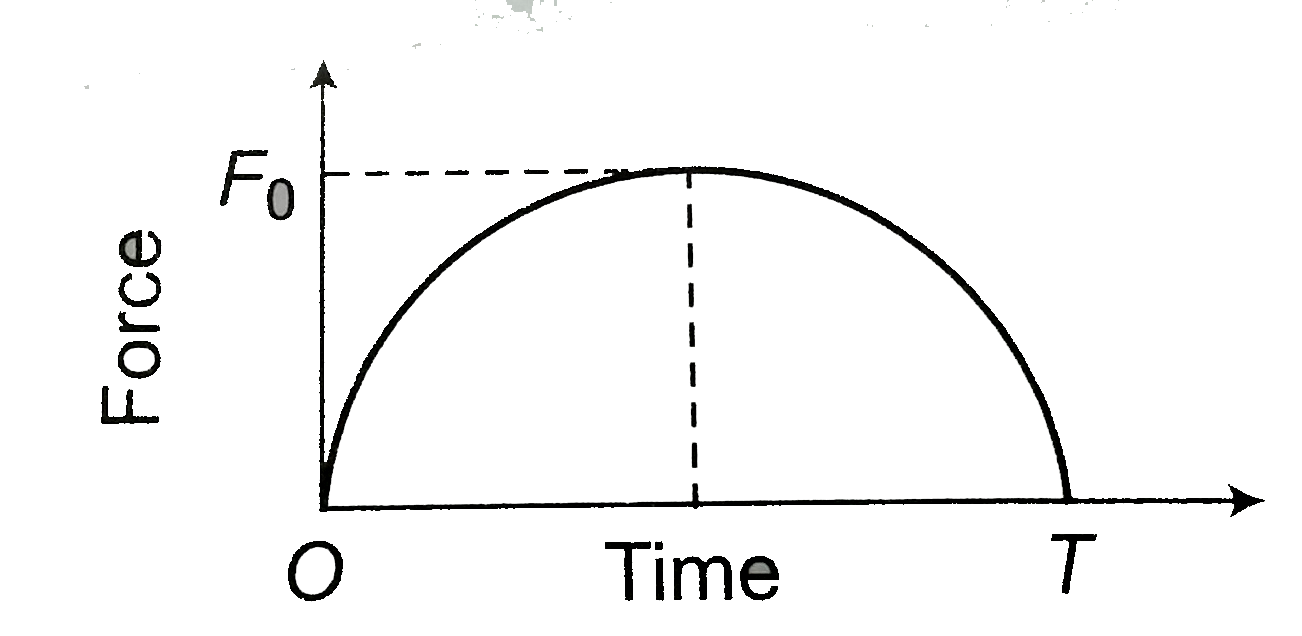Tow particles X and Y, of equal mass and with unequal positive charges , are free to move and are initially far away from each other . With Y at rest , X begins to move towards it with initial velocity u. After a long time , finally .
The correct Answer is:A
Equal electrostatic force (mutual interaction) acts on X and Y but in opposite direction which accelerate Y but retards X. After long time the velocity of X becomes zero while Y becomes u.
Topper's Solved these Questions
- MISCELLANEOUSBOOK - ALLENCHAPTER - MISCELLANEOUSEXERCISE - Exercise-03
1 Videos
- MISCELLANEOUSBOOK - ALLENCHAPTER - MISCELLANEOUSEXERCISE - Exercise-04
1 Videos
- MISCELLANEOUSBOOK - ALLENCHAPTER - MISCELLANEOUSEXERCISE - Exersice -05(B)
20 Videos
- KINEMATICS (MOTION ALONG A STRAIGHT LINE AND MOTION IN A PLANE)BOOK - ALLENCHAPTER - KINEMATICS (MOTION ALONG A STRAIGHT LINE AND MOTION IN A PLANE)EXERCISE - BEGINNER S BOX-7
8 Videos
- PHYSICAL WORLD, UNITS AND DIMENSIONS & ERRORS IN MEASUREMENT BOOK - ALLENCHAPTER - PHYSICAL WORLD, UNITS AND DIMENSIONS & ERRORS IN MEASUREMENT EXERCISE - EXERCISE-IV
8 Videos
Similar Questions
A particle of mass m with an initial velocity uˆi collides perfectly elastically with a mass 3 m at rest . It moves with a velocity vˆj after collision , then , v is given by :
View SolutionA particle of mass m moving with speed v in position x - direction collides perfectly inelastically with another identical particle moving with same speed in positive y - direction . Find final velocity of the combination.
View Solution
Knowledge Check
Two positively charged particles X and Y are initially far away from each other and at rest , X begins to move towards Y with some initial velocity. The total momentum and energy of the system are p and E.
AIf Y is fixed, both p and E are conserved.BIf Y is fixed, E is conserved, but not p.CIf both are free to move ,p is conserved but not E .DIf both are free, E is conserved , but not p.X and Y are two station 500 km apart. A train start from X and moves toward Y at 20 km/hr another train station from Y at the same times and moves toward X at 30 km/hr. How far from X will they cross each other ?
A200kmB30kmC120kmD40kmConsider the elastic collision f two bodies A and B of equal mass. Initially B is at rest and A moves with velocity v. After the collision -
Athe body A tracks, its path back with the same speedBthe body A comes to rest and B moves aways in the direction of A' is approach with the velocity vCboth the bodies stick together and are restDB moves with velocity v/2 and A retraces its path with velocity v/2
A particle P of charge q and m , is placed at a point in gravity free to move. Another particle Q, of same charge and mass , is projected from a distance r from P with an initial speed v0 towards P , initial the distance between P and Q decreases and then increases.
The potential energy of the system of particles P and Q, at closest separation is
View SolutionA ball of mass moving with a velocity u collides head on with a ball B of mass m at rest. If the coefficient of restitution is e. the ratio of final velocity of B to the initial velocity of A is
View SolutionA particle of mass m , initially at rest , is acted upon by a variable force F for a brief interval of time T. It begins to move with a velocity u after the forrce stops acting . F is shown in the graph as a function of time. The curve is a semicircle.

View SolutionA particle moves with an initial velocity V0 and retardation αv , where α is a constant and v is the velocity at any time t.
total distance covered by the particle is
View SolutionThree charged particles are initially in position 1, "They are free to move and they come in position" 2 "after some time. Let" U1 and U2 be the electrostatic potential energies in position 1and2. Then
View Solution
